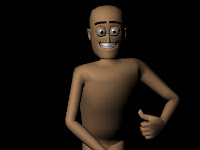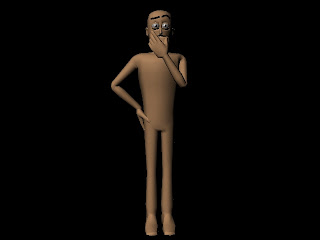In this blog I shall be exploring the character design that I have created for my project for 2D Digital Techniques. I am very excited about this project and am very keen to get started with the presentation of my process of development of my silhouetted character design.
Before I created my final project piece, first I had to create an initial concept, but to do that I needed to have a few draft sketches of different poses I might use as I was doing a character design.
The premise to this character is that a female woman has been taken in from a barren waste land, at the brink of death; she is "saved" by the elitist empire. With all of the amazing technology that they possess, they try to genetically modify the woman and create a super soldier, but seeming as she is so badly damaged, they use machinery to bring her to life and keep her stable, hence the cyborg look.
The picture portrays the lady in her state of being born as a cyborg. Similar to the terminator judgment day film, where he is teleported through time but he has no clothing. This is the same for my character; she is in her initial state as she emerges from her chamber.
((please note that i could not upload images into this blog due to technical errors, so i have supplied Ten development images with the email containing this link, the images correspond to the relevant image name in the brackets))
The next stage, was where I started painting out the silhouette of a man, I decided to create a male warrior at first so I used the silhouette as a basis for the initial start of my painting.
In the next image you can see that I had a change of heart and decided to change from a male character to a female character instead. To do this I created a new outline of a female torso, I thinned the arms and added more curvature in the outline suggesting female anatomy.
In the next image you can see that I filled in the silhouette, I did this so that I can add some mid-tone greys and add highlights to make them stand off the black more effectively.
In this image you can see that I started to experiment, I was using harder and softer light shading, the softer shading being on the right and the herder on the left, I enjoyed doing this because it was slowly teaching me what values and shades I could use effectively.
In this image you can see that I have started to add stronger shades to the silhouette suggesting muscles and reflected surfaces, I have suggested shadows and rim lighting.
In this you can see that I have started to add tubing, this suggests cyborg technology and makes the figure seem more futuristic, it also adds more characteristic to the image itself.
In this image you can see that I discarded my second silhouette and made the size of the silhouette bigger, I added some more lighting detail and added some white dots on the silhouette especially around the head, to suggest lighting and shiny surfaces.
Here in the 8th image, you can see that I have simply just added a background using hue and saturation, this elevates the picture slightly and pronounces the rim lighting, bringing the silhouette off the page.
Last but not least, I finalized my silhouette and added some texture to the background of my image, giving a little texture to the scene so it doesn’t seem so static and plain.


























